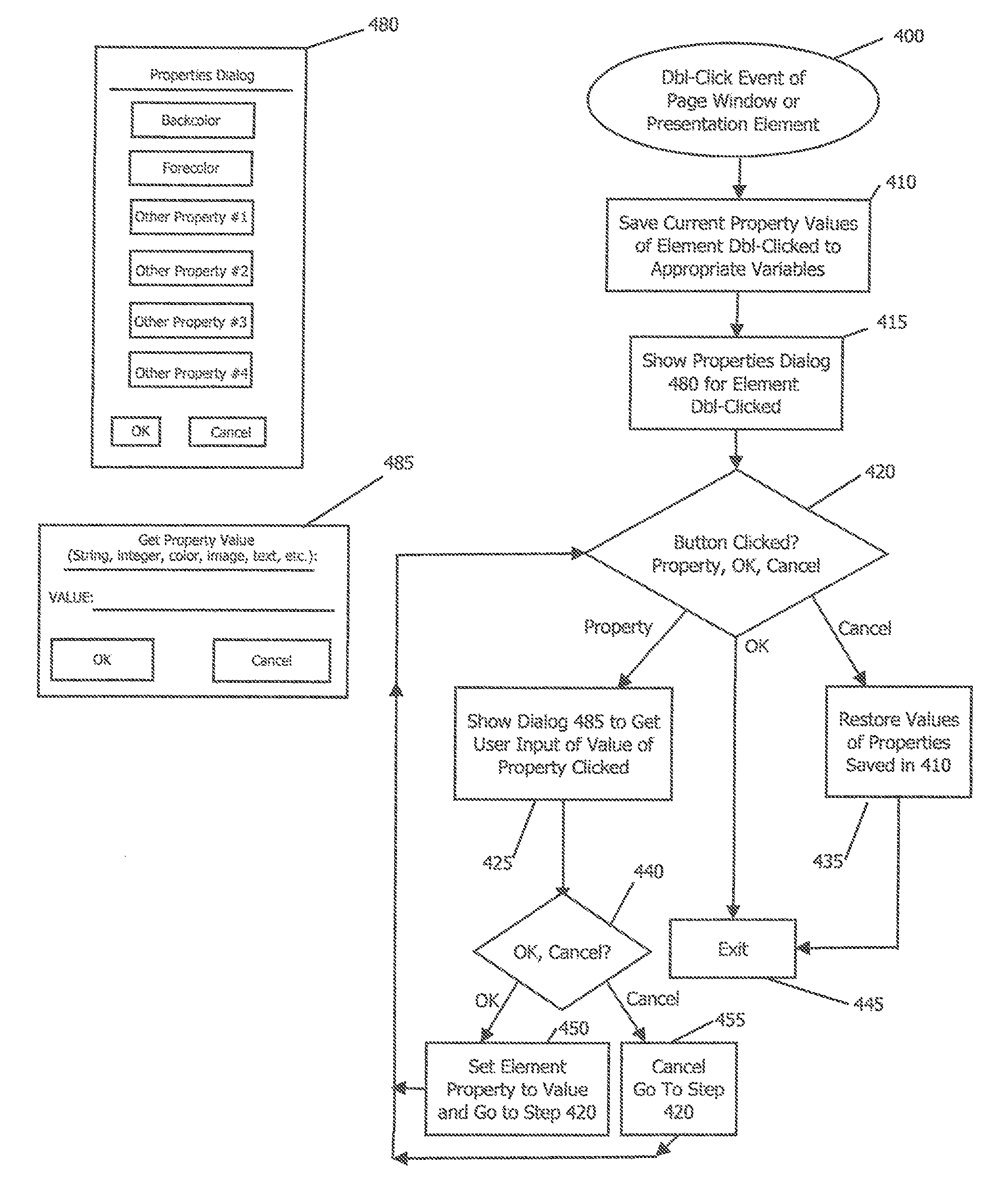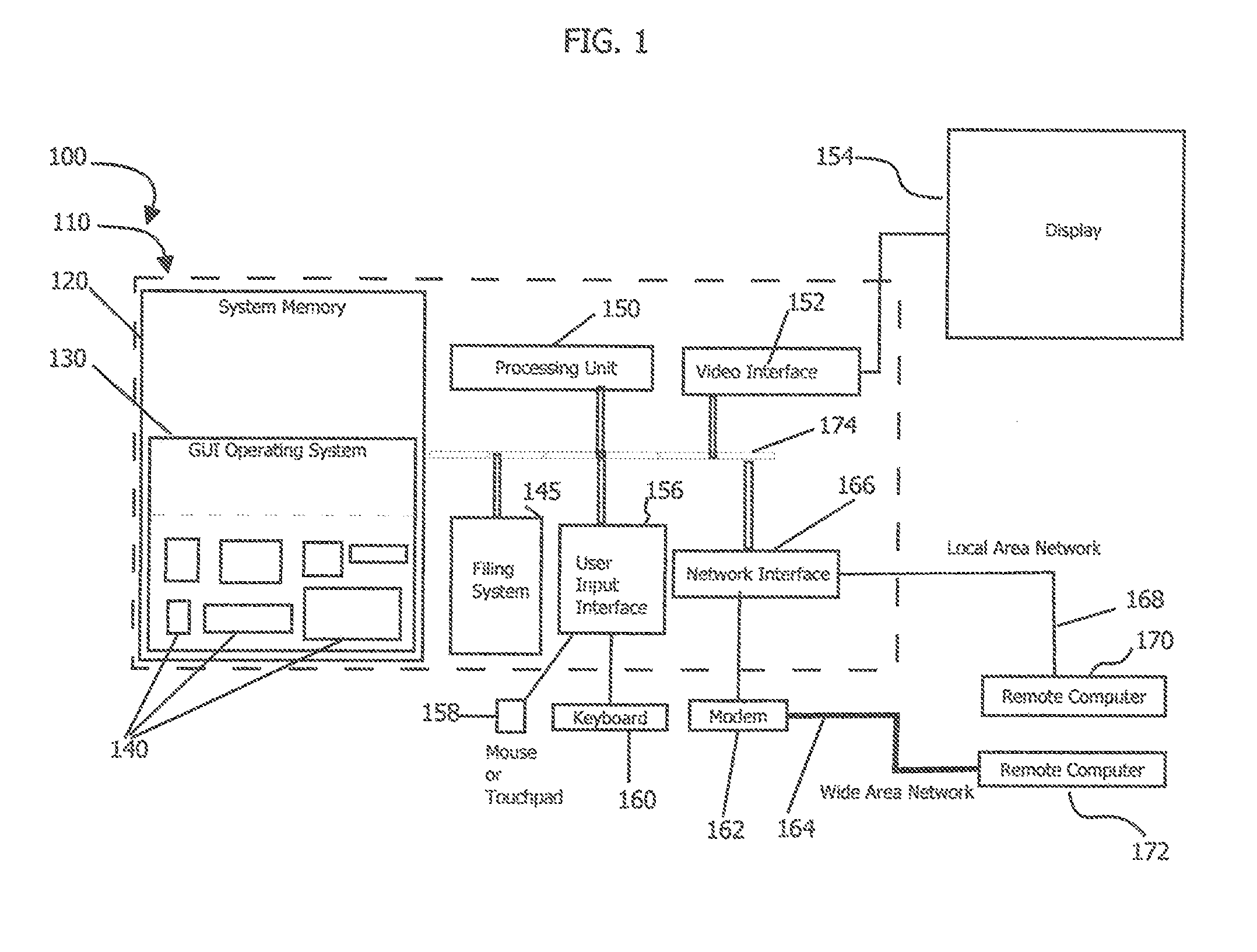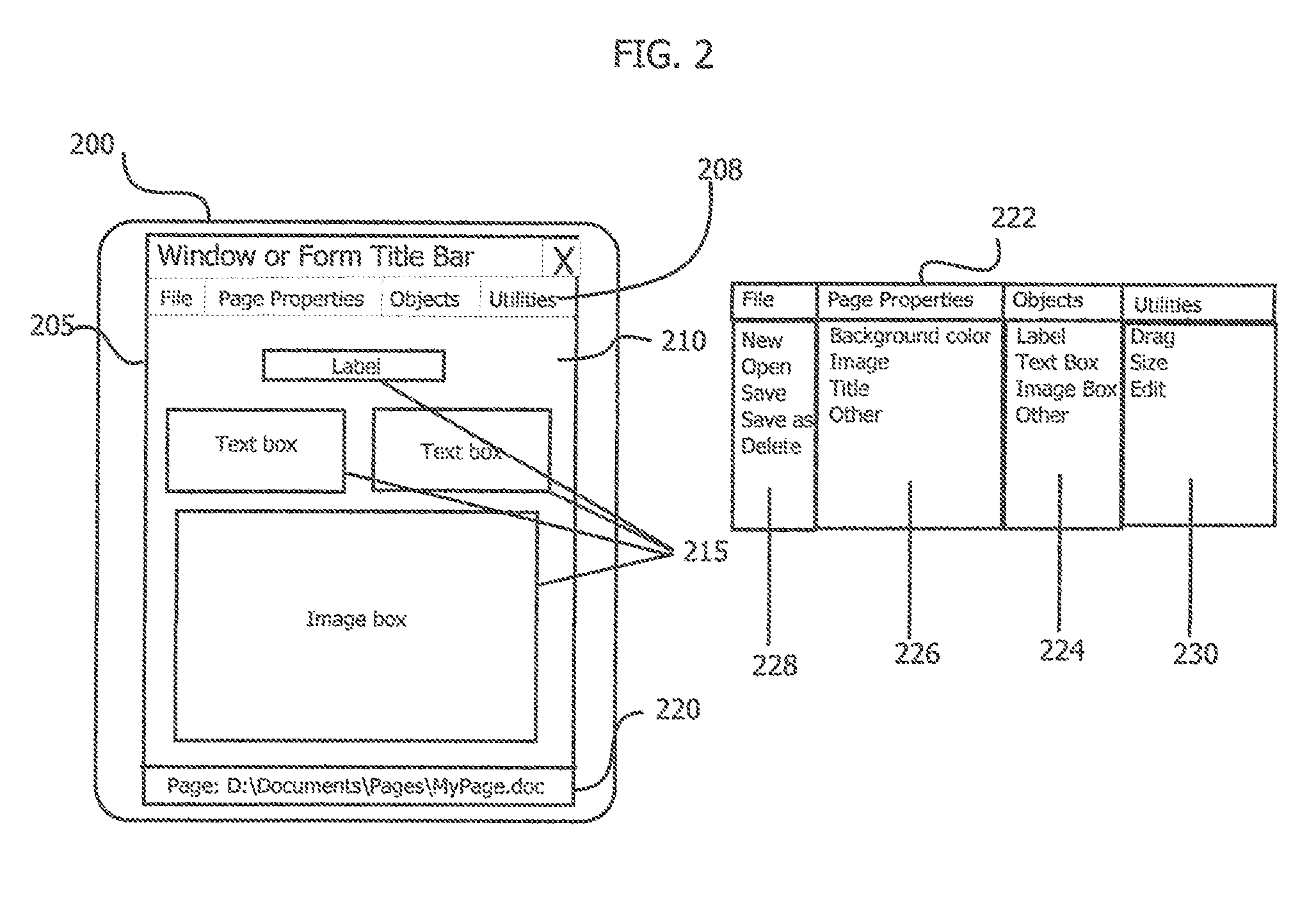[0006]GUI, pronounced “gooey,” is an acronym for Graphical User Interface. Most computer or computing device operating systems today implement a GUI. The term “GUI element” as used herein refers to classes as defined in object oriented programming, and classes are objects which have properties, methods, and events. GUI elements are commonly referred to as controls or widgets and include windows, forms, text boxes, labels, data grids, image boxes, combo and list boxes, timers, command buttons, check boxes, radio buttons, date and time pickers, and many, many more. GUI elements are included in the operating systems of computers which provide a graphical user interface and said elements are intended to be used by software developers to build applications or programs in which GUI elements form interactive displays of data generally allowing users to perform productive tasks in connection with computer programs. These elements therefore provide developers with a great deal of flexibility to program events which users can invoke to accomplish tasks. Additionally, developers have the ability to add additional properties, events, and methods to existing elements and can also combine existing elements to make new compound elements. And developers can design from scratch new GUI elements for incorporation into an operating system which can then be used by other developers in their software. An important feature of some GUI elements is that they are designed to be containers for other GUI elements, and can even contain additional instances of themselves thus forming hierarchies of elements within elements, within elements, ad infinitum.
[0007]The key concept of the invention described here is that, although GUI elements were developed to provide a graphical user interface for application programmers to incorporate into software to accomplish tasks, clearly they can also be used to display, yield, impart, or give information as in a book, magazine, power point presentation, or HTML web page. Additionally, through programming of events or associating scripts to be executed when an event occurs, one can develop highly interactive multimedia documents, like HTML web pages. And hyperlinks, the hallmark of the World Wide Web, can also be easily emulated using GUI element event programming. Additionally, since GUI elements are designed for event programming, any displayed GUI element can be programmed to fully permit users to trigger events that permit creating new elements and changing the properties of existing elements, thus overcoming the limitations imposed by HTML elements.
[0011]In addition to providing a truly read-write web, the system developed here offers additional advantages. For example, creating multimedia documents using the system developed here is easier and less time consuming to learn than HTML web page and web site development. Additionally, the system can be readily combined, coordinated, and augmented with software components, modules, routines, and data structures to achieve a wide variety of useful multimedia authoring applications. For example, the system can be readily adapted to create a collaborative document development system involving multiple authors working on multiple documents accessed over a network or the internet, and can be the basis for developing educational and learning management systems, and for developing linked distributed document webs comparable to the World Wide Web.
[0012]This invention also makes it easier and less time consuming to incorporate editable data from databases into documents. Incorporating a common GUI element called a datagrid into an embodiment of this invention greatly simplifies the process of designing pages containing tables of data from databases which can be readily and directly edited by users if they have permission. The designer of a page simply needs to position and size a data grid, then invoke an event that gives a simple dialog form to fill out the database location, the structured query language select statement to obtain the data and the task is complete. There is no need for complex programming of server side software to obtain the data from the database and incorporate it into the HTML document sent to the client. With this invention, the datagrid, not the page designer, performs these functions automatically on the client after the page document is delivered. Additionally, there is no complex programming and traffic involving back and forth data transmissions between client and server to enable a user on the client to modify a value in a cell of the table. The datagrid on the client takes care of these tasks automatically and directly communicates with the database.
[0014]Microsoft Corporation has implemented a GUI element called a scripting control which can be emulated on other computing systems and incorporated into embodiments of this invention. The scripting control provides a user interface dialog to select another GUI element on the same page and an interface to type or copy and paste scripting language routines to access and modify the properties of the selected element, and invoke its events and methods thus providing the capability to develop dynamic documents comparable to Dynamic HTML.
 Login to View More
Login to View More  Login to View More
Login to View More 


